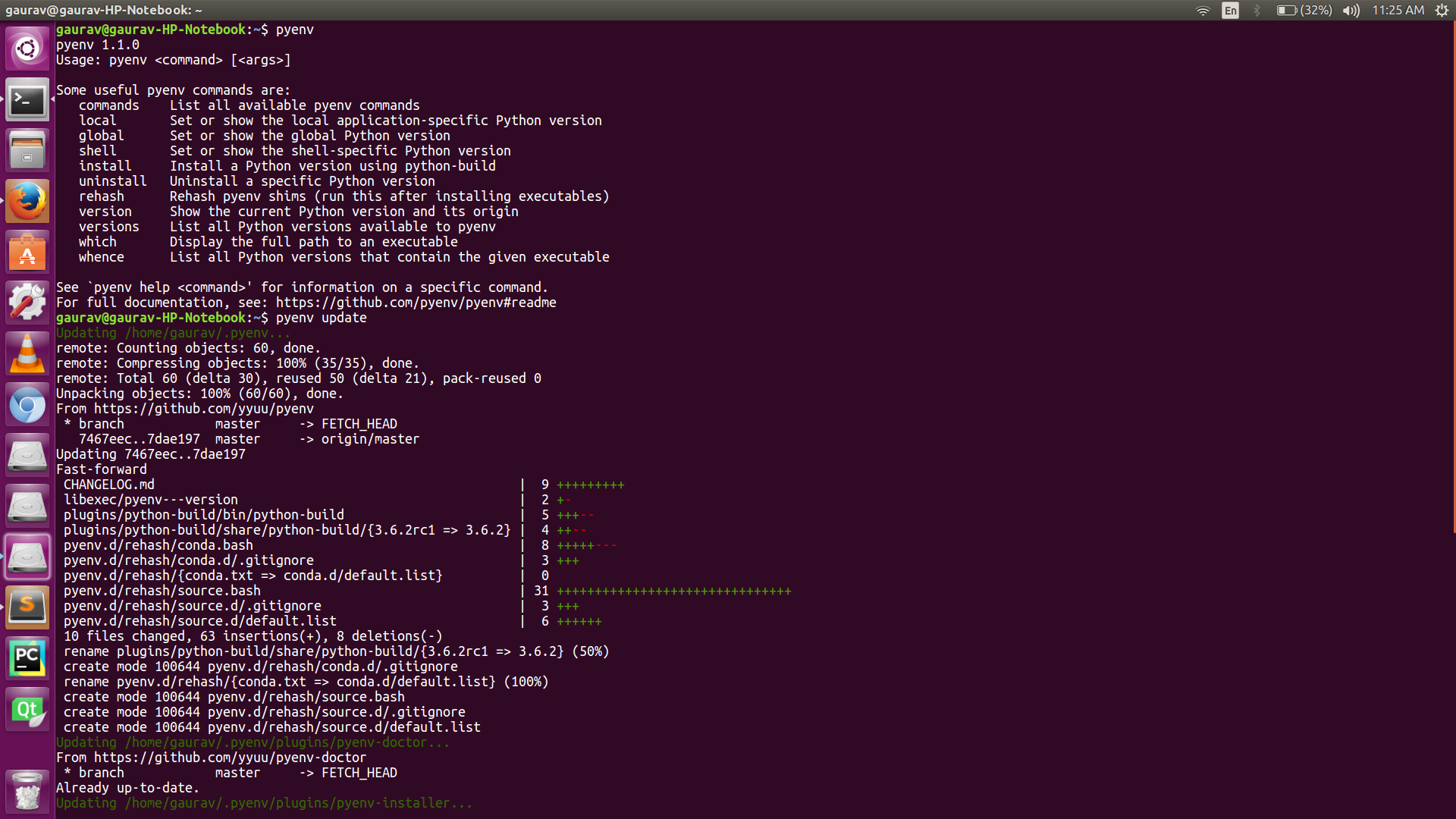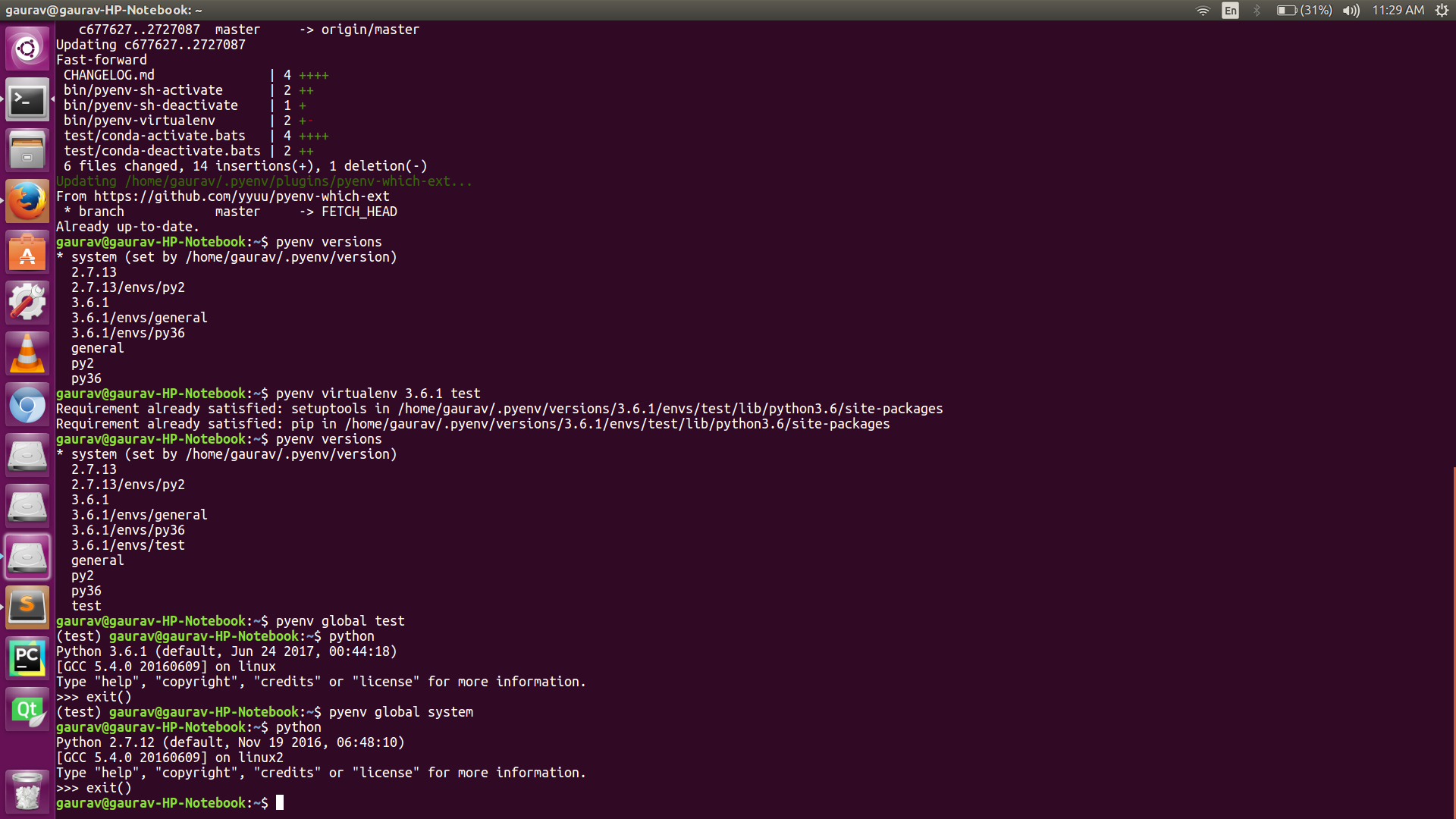In this post,I am sharing how we can run different versions of python easily with virtual environment support by usng [pyenv].I am using pyenv these days.I find it better than using virtualenv. My currently activated environment remains activated even after restarting Terminal shell which I prefer. Another feature of pyenv is that you can set environment local to any folder.
Thanks : Yamashita (Author of pyenv)
Steps
1. Use pyenv-installer to install pyenv.You can install pyenv by using this command on Terminal :
$ curl -L https://raw.githubusercontent.com/pyenv/pyenv-installer/master/bin/pyenv-installer | bash
2. To update pyenv ,use this command :
$ pyenv update

3. Open your .bashrc file and make sure that these lines are added to it .Otherwise,you need to add these lines to your .bashrc file by editing the file wih sudo command:
# Load pyenv automatically by adding
# the following to ~/.bash_profile:
export PATH="/home/gaurav/.pyenv/bin:\$PATH"
eval "$(pyenv init -)"
eval "$(pyenv virtualenv-init -)"
4. To install specific version of Python ,say Python 3.6.1 ,use this command :
$ pyenv install 3.6.1
5. To create a virtual environment system ,say test which uses Python 3.6.1 which we installed in previous step,you can use this command :
$ pyenv virtualenv 3.6.1 test
6. To activate this new virtual environment test,you need to use this command :
$ pyenv virtualenv 3.6.1 test
7. To list all virtual environments of pyenv ,use this command :
$ pyenv versions
8. To switch back to system Python ,use this command :
$ pyenv global system

9. To uninstall any virtual environment ,say test,use this command and Entere y when it asks for confirmation :
$ pyenv uninstall test
Now,you can easily run different versions of Python along with virtual environment support.
Thanks for reading my post.I hope this post will be useful for them who want to manage different versions of python with virtual environment support .If you have any query/question,please post in comments section.